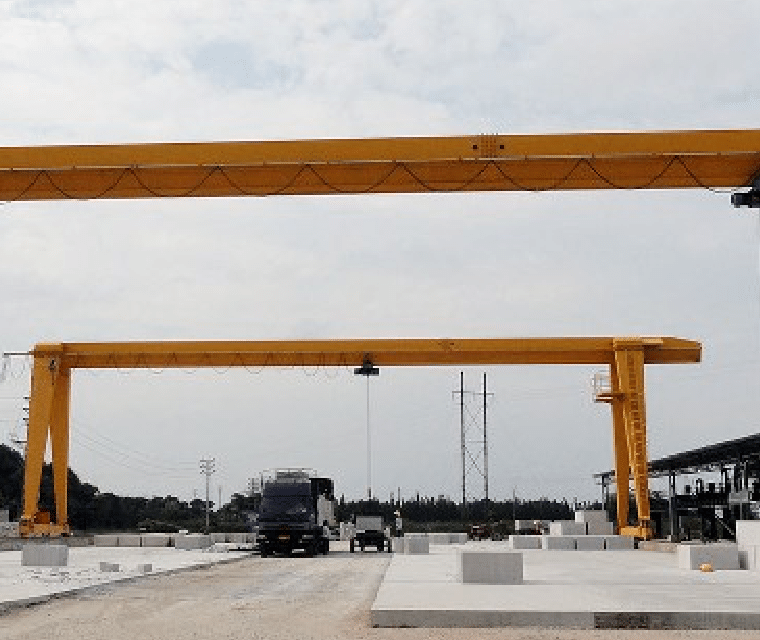In almost any factory setting, Electrical Chain Hoists can be a must-have. Great for providing vertical lifts, electric chain hoists are pretty straight forward and easy to function. This may cause them a stylish selection for businesses.

However, precisely what is not too easy is the task of selecting the best hoist for your requirements. The marketplace is currently flooded which has a large numbers of products, many of which are subpar offerings. With all manufacturers claiming the most notable spot, it might become tough to settle on the correct one.
That is why, to make sure that that you do not go awry, we've gone ahead and compiled this whole help guide to choosing electric chain hoists available. After you go through the guide below, you'll have no problem understanding which product you need to purchase.
But let's begin at the beginning and clear the air on the an electrical Chain Hoist is.
What is a power Chain Hoist?
To put it differently, an electrical chain hoist is often a device that's useful for vertically lifting and lowering any materials. The hoist contains an auto using a brake, Gearbox, Load Chain wheel along with a controller, which are used to control the motions with the system. The lifting element used is the Alloy Steel Chain.
These kinds of hoists are excellent in factories and machine shops, which require fast lifting and loading of products.
A few when choosing Electric Chain Hoists
Choosing the right chain hoist is probably the essential prerequisites for a safe and efficient workshop environment. Are mainly a number of the key factors that must definitely be taken into account when choosing the proper product.
The body weight from the load: This can be the first and most essential aspect you need to consider when scouting for electric chain hoists. The strain you will be lifting determine the type of hoist you will want to buy. Generally speaking of thumb, for just ten plenty of lifting capacity, a chain hoist is preferred. However, for lifting greater weights, an electrical wire hoist is acceptable. However doesn't hold with good lifting height. So, depending on your industry needs and requirements, a choice of hoists will change.
Application Requirement: When you've determined the burden type, you'll want to find out the approval that you will be putting the hoist. Ask yourself this: Can you put it on for product assembly? If that's the case, then extreme precision can be a prerequisite. Important too is to know if you're using any devices under the hook. Or exactly what are your duty cycles?
Lifting Speed: The subsequent key to consider will be the lifting speed, which have to be carefully calibrated to the proper loading and unloading of the materials being lifted.
The job Environment: Perhaps more important than lift speed could be the environment where your hoist will likely be used. Factory environments can be abrasive for machinery, and it is vital to view the impact the workplace is going to have on your equipment. For example, in the event the hoist can be used in extremely high-temperature environments, this may result in gearbox leakage and related hoist malfunctions. Similarly, shallow temperatures could cause cracks to develop or internal components to freeze. Setting where you can find extreme temperature swings can even be detrimental for the operation of one's hoist. Frequent temperature changes can result in electrical short circuits and associated equipment malfunction.
The work Cycle: This means the time which is why your hoist will probably be used. The quantity of hours the hoist will operate at a time may affect the robustness of the device. The length of the obligation cycle is very important as electrical hoists need to dissipate heat through the motors. Therefore they should be given sufficient downtime for cooling and recover. Otherwise, you could possibly you need to be inviting equipment malfunctions.
The Height In the Lift: The height to which you should lift the load also plays a significant part inside the selection of the hoist. Usually, electric chain hoists possess a container where the excess chain is spooled. Naturally, the better the height, the more the chain, this also means a larger chain container. If not designed properly, a too-large container could possibly work as an obstruction to the load being lifted. An electrical Chain hoist is a preferred choice for higher lifting height, e.g. windmill hoist for turbine maintenance.
The energy Source: The level of hoist you need may also determine the kind of source of energy you'll want to use. For low-duty cycle applications, a single-phase hoist is enough. If, however, you need extremely high-duty cycles, then it is best to buy a three-phase hoist. This may just be sure you plenty of power for that machine's operation.
Warranty: As much as machines go, a hoist is among the ones that undergo the most common damage. Hence, to prevent repair costs, you have to obtain a creation that has attractive warranty features. Be sure that the hoist warranty covers all essential parts and labour. Usually, labour is more costly than parts, therefore it is best if the warranty comes with both included.
Security features: After the morning, an electric hoist is a machine. As well as in any setting where electrical tools are being utilized, accidents can happen. That's why, when choosing the hoist, be sure it's all essential safety features, including load limiters. Important too are self-adjusting brakes and thermal overload protection.
To learn more about Elevator check this resource
